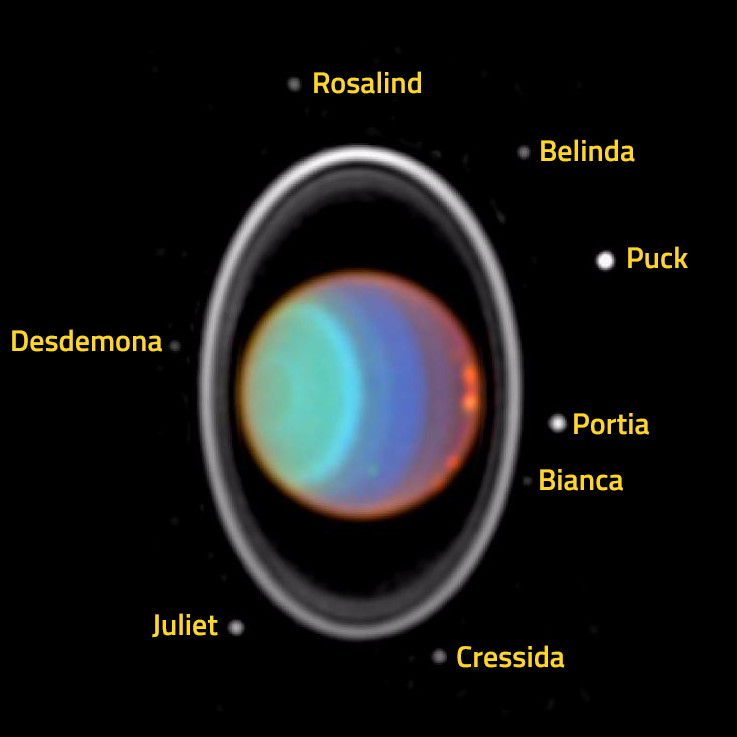Rosalind, a moon of Uranus

Image of Uranus in infrared from Hubble Space Telescope. Image was taken on 28th July 1997, capturing clouds in the atmosphere of Uranus, its rings and 8 of its moons, including Rosalind. Image credit: NASA/JPL/STScI
43,434 miles
45 miles
Rosalind is one of the 27 moons of Uranus. It is the eighth closest moon to orbit the planet, orbiting at an average distance of 69,900 kilometres (43,450 miles). Rosalind has a diameter of 72 kilometres (45 miles) and takes only 13 hours to complete an orbit of the planet.
Rosalind is classed as an inner regular prograde moon of Uranus. It travels around the planet in the same direction of the planet's rotation and is believed to have formed from materials spinning around the planet.
Rosalind is a a member of a group of Uranus' moons called the Portia group. The Portia group contains nine moons (Bianca, Cressida, Desdemona, Juliet, Portia, Rosalind, Cupid, Belinda and Perdita) which have similar appearances and characteristics. These moons may have unstable orbits which leads to the possibility that, at some point in the distant future, they could collide with each other, break up into pieces, form rings or crash into Uranus.
The moons of Uranus get their names from characters in the works of William Shakespeare and Alexander Pope. Rosalind is a character in William Shakespeare's play As You Like It, written around 1598 to 1600
Rosalind is the daughter of Duke Senior. Duke Frederick, takes Duke Senior's dukedom and forces him into exile. Rosalind remains in court initially and befriends Duke Frederick's daughter, Celia. However, Duke Frederick later decides to banish Rosalind too as he is jealous of her popularity. Rosalind wanders the Forest of Arden to seek out her father accompanied by Celia and the court jester Touchstone. Rosalind and Celia disguise themselves, Rosalind as a young man called Ganymede and Celia as a shepherdess named Aliena. They also bump into Orlando and Oliver in the forest. Rosalind (as Ganymede) and Orlando fall in love, while Celia and Oliver also fall in love. Rosalind later reunites with her father, reveals her true identity to Orlando, and everything ends rather happily.





